What Tree? How to Hit a Hook Shot—curve Ball—around an Obstruction
Jul 15, 2019
For most golf shots as an amateur, the general aim is to hit it as straight as possible. From the initial drive to the approach shots, control is key, and hook golf shots are usually undesirable. However, there will be times when you need to get yourself out of trouble, and the only way to beat that obstacle is to go around it. When that happens, a hook ball is a handy shot to keep up your sleeve. Let’s look at how you can refine yours on your portable golf simulator or out on the course.
What Is a Hook Shot in Golf?
A hook shot in golf is a ball that starts its trajectory on one side of the player and then curves around to the other side during flight. For right-handed players, a hook golf shot starts out to the right and swings to the left. For left-handed players, the ball will go from left to right.
How Is It Different from a Draw or Fade?
Fades (or slices) are similar to hook shots, but the ball is played in the other direction (left to right for right-handers).
A draw shot in golf is played in the same direction as a hook shot, and the two terms are sometimes used interchangeably. However, most golfers agree that there is a subtle difference between a draw and a hook, with the hook shot being the faster, deliberate, and more aggressive of the two, resulting in more curvature on the ball arc.
Why Should I Learn a Hook Shot?
Aside from the hook shot being useful against obstacles like trees and hanging branches, one other useful reason is simply to master your swing. Deliberately practicing hook shots teaches you a lot about how the swing affects ball flight and arc, and it can help iron out any lingering technique problems that are negatively impacting your ball control.
How to Hit a Hook Golf Shot
As always, hitting a reliably accurate hook shot (and not a wild one you can’t control) takes plenty of practice, but these pointers will get you on the right track:
- Close your stance – This means putting your right foot back about 4-6 inches if you’re a right-handed player. This points you toward the right, which is where your ball will start its arc, but it closes the angle of the club on impact.
- Close the clubface – Hold your club in its normal position and rotate it slightly counter-clockwise so the clubhead is angled to the left on impact. This creates the spin on the ball to get it swinging to the left in the air.
- Tighten your grip – Tighten just a couple of notches, so you’re not letting the clubhead open up on impact. It also lets you turn your hands through a little more dramatically on impact, which gives you more side spin and a more pronounced trajectory.
- Work on club speed – Club speed won’t necessarily give you a hook shot, but it will make any hook shot that much more curved. Again, it’s about forcing extra rotations on the side spin.
- Check your angles – Various ball and clubhead angles at impact play into the effectiveness of your hook shot. Specific data to look for is the spin loft, calculated by the difference between your dynamic loft and angle of attack. A higher spin loft means more vertical spin at the expense of side spin (and therefore less curvature), and vice versa.
Why Do I Hook My Golf Shots?
Deliberately hooking a golf shot is a great skill to have, but what if you’re doing it accidentally and want to correct your action?
If you’re consistently hitting unwanted hook balls, chances are you’re unconsciously doing one or more of the actions we described above. What you’ll need to do is identify what you’re doing in your swing—Is your grip too tight? Is the clubface too closed? Is your stance not open enough?—that is causing the hook, and try to eliminate it.
You won’t be able to unlearn these kinds of errors overnight, but there are plenty of pro golfers who can attest to the fact that, with enough practice, you can get the right habits and total control.
An excellent place to start learning is with an accurate portable launch monitor like the GC2 or GCQuad. Delivering real-time, high-precision data points vital for analyzing a hook shot— including angle of attack, azimuth, delivered face angle, and more—it gives you vital tools for improvement, no matter where you’re practicing.
Contact us today to find out what our launch monitors can do for your game.




































